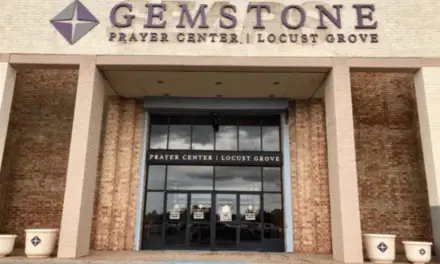The movie Dear John was filmed in several locations across South Carolina, including the city of Charleston. These places helped create the setting for the story and added to its authentic feel.
Charleston and other South Carolina sites provided the main filming locations for Dear John. These areas offered a mix of historic charm and natural beauty that matched the film’s tone and story.
1) American Theater
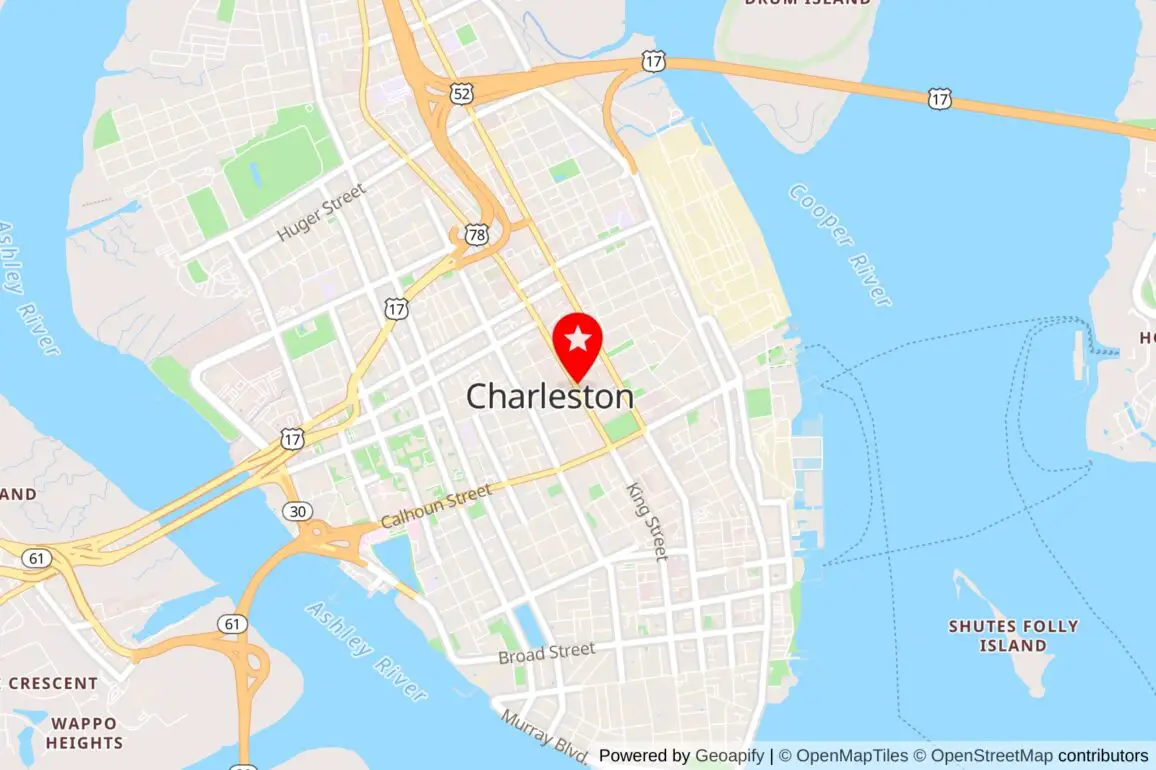
The American Theater in Charleston is an important event venue known for its historic charm. It has been carefully restored to keep its classic look while serving as a space for weddings and other special occasions. The venue offers a unique setting that blends history with modern needs.
Since 1997, the owners have managed to preserve the building’s character while providing a high-quality experience for visitors. Many celebrations take place here, making it a popular spot for memorable events. Its history adds a special touch to any gathering held on the premises.
The theater features elegant interiors that create a refined atmosphere for events. It is well-regarded for its seamless planning and support services, helping hosts organize celebrations with ease. The venue also benefits from being located in a vibrant part of Charleston.
Location: 446 King St, Charleston, SC 29403
2) Boone Hall Plantation & Gardens
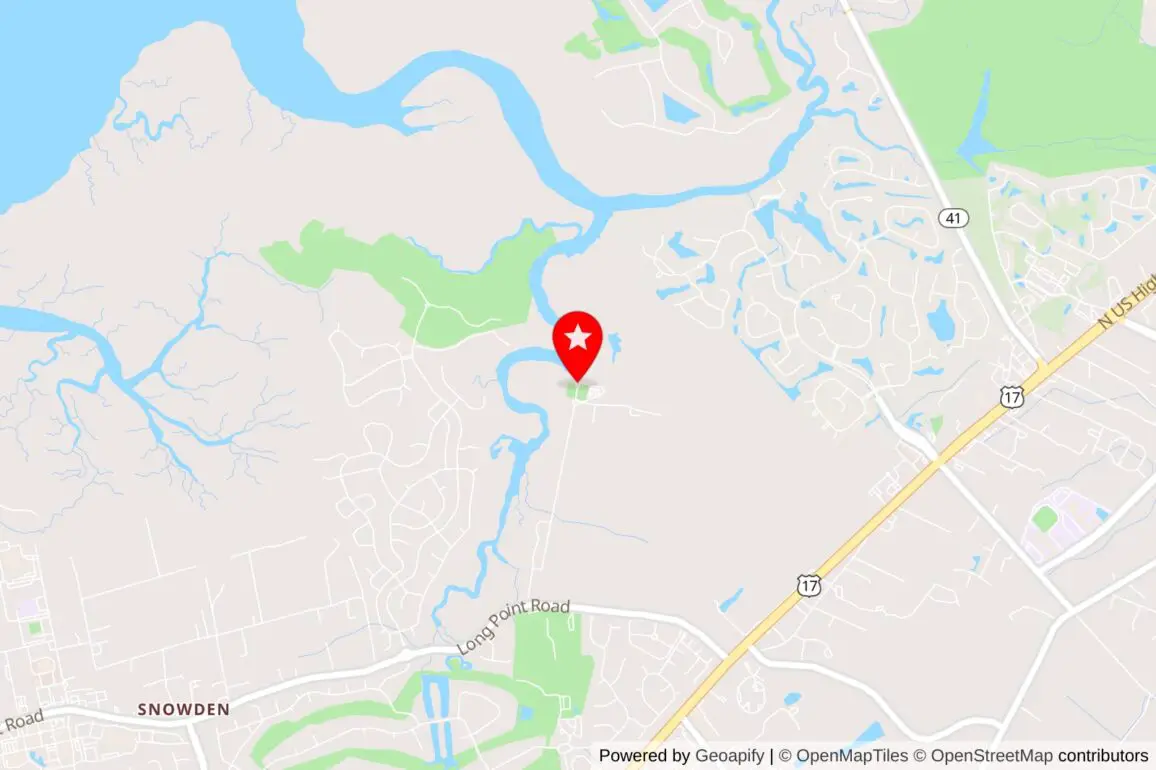
Boone Hall Plantation & Gardens is one of the oldest working plantations in America, established in 1681. It is well known for its long avenue lined with live oak trees covered in Spanish moss. These trees were planted in 1743 and create a natural tunnel that has become a famous symbol of southern history.
Visitors can explore the original slave cabins, which now house a museum and exhibit on the lives of enslaved people. The plantation offers guided tours of its historic home, built in the 1930s, showcasing period furnishings and architecture.
The plantation is also a working farm covering 738 acres. Guests can take a tractor tour to learn about its farming history and see the surrounding landscape. Boone Hall is unique in offering live presentations of Gullah culture, including storytelling and song by true descendants of the Gullah people.
Boone Hall features gardens with seasonal flowers and a tropical house filled with exotic plants and water features. This combination makes it a popular filming spot, capturing both natural beauty and historic significance.
Location: 1235 Long Point Rd, Mt Pleasant, SC 29464
3) The Cistern – College of Charleston
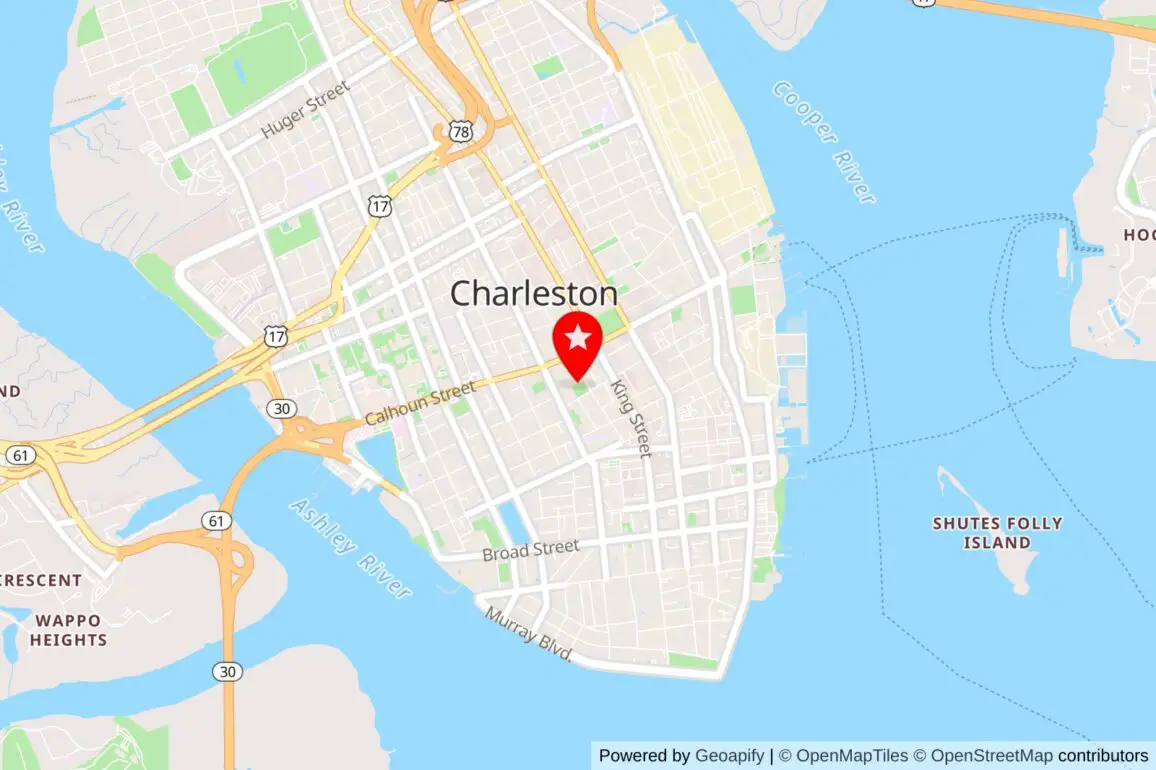
The Cistern is a well-known site located at the College of Charleston. It is part of the college’s historic campus, which has been around for more than 250 years. The area is admired for its blend of history and modern education.
The college offers many programs and has a strong academic reputation. It is set in Charleston, a city famous for its well-preserved historic districts. The Cistern attracts visitors who want to explore the college and its surroundings.
Charleston itself is known for a vibrant cultural life and a welcoming community. The college campus gives easy access to downtown Charleston and nearby beaches, making it a popular location for filming and tourism.
The Cistern, with its scenic and historic value, offers a unique backdrop. Its setting reflects both the past and the growing innovation of the city.
Location: 66 George St, Charleston, SC 29424
4) College of Charleston
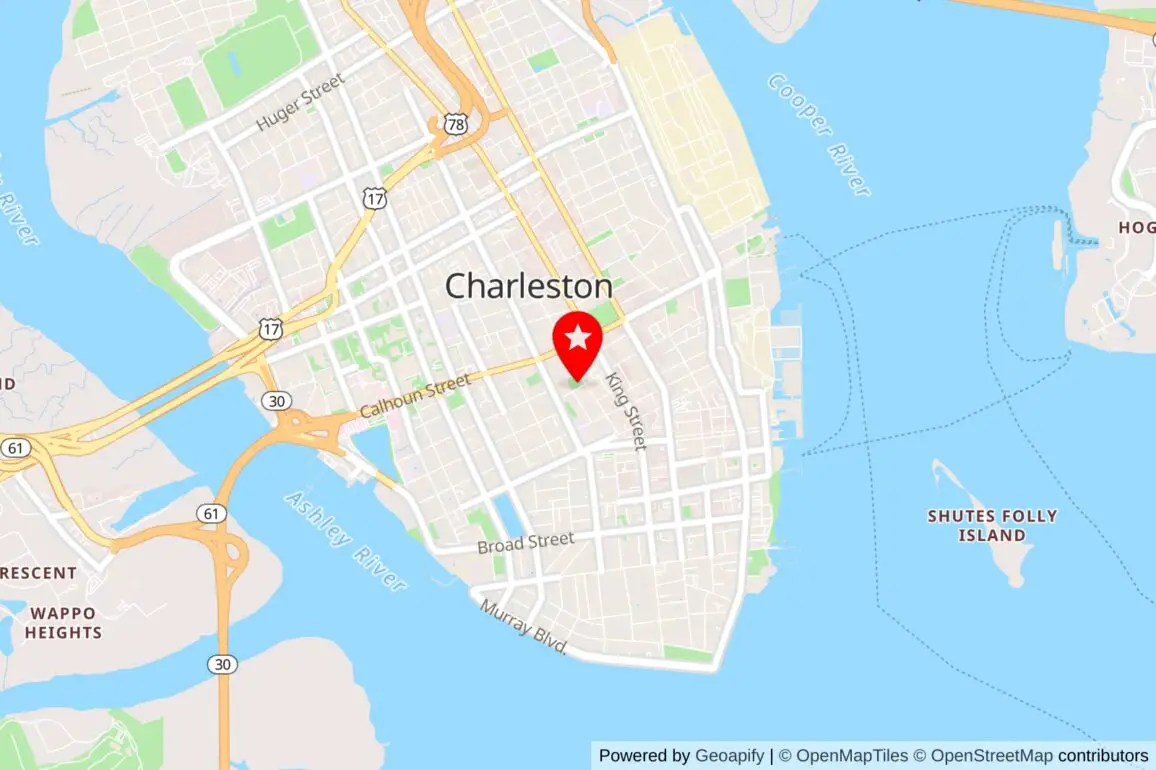
The College of Charleston is located in the heart of Charleston, South Carolina. It is known for its historic setting in one of the country’s best-preserved downtown areas. The campus blends classic architecture with a vibrant college atmosphere.
The college offers a wide range of programs for students. It has around 150 undergraduate majors and minors, plus graduate degrees and certificates. This variety allows students to pursue many different interests.
Life at the College of Charleston is enriched by its location. The city is large enough to offer cultural activities but small enough to feel welcoming. Students enjoy easy access to nearby beaches and events throughout the year.
The college is part of a city with a mix of historic charm and modern business innovation. It sits near companies like Google and Boeing, adding to the area’s appeal for students and visitors.
Location: 66 George St, Charleston, SC 29424
5) Cisternyard Media
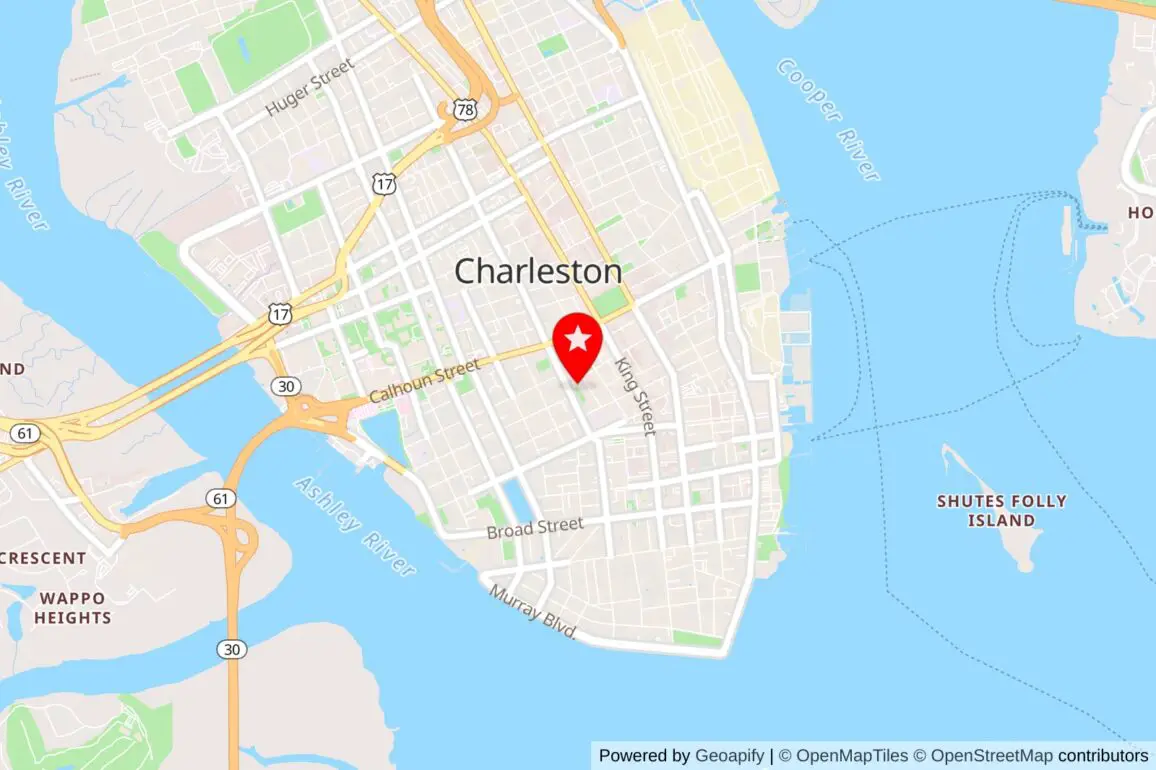
Cisternyard Media is a student-run media company located on the College of Charleston campus. It offers students multiple ways to get involved with media production, including news writing, radio broadcasting, video production, and public relations.
The company is divided into five branches. These include a news and fashion magazine, a video unit, a radio station, a general miscellany group, and a public relations and sales team. Each branch provides unique opportunities for students to develop different skills.
Students who join Cisternyard Media gain experience in writing, design, advertising, and sales. This hands-on work helps prepare them for careers in media and communication fields.
Their work supports local stories and provides a platform for student creativity. The organization encourages collaboration and learning in a professional setting.
Location: 71 George St, Charleston, SC 29424
6) Porter’s Lodge – College of Charleston
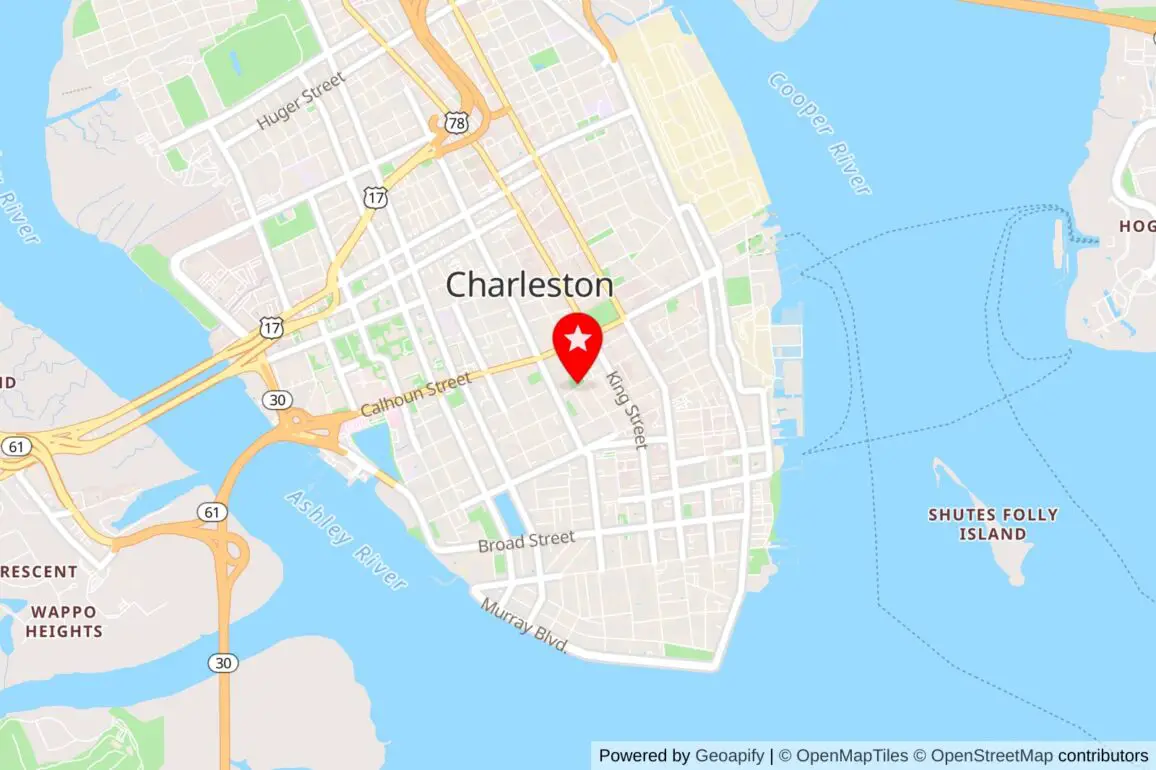
Porter’s Lodge is a well-known historical landmark located at the College of Charleston. It sits in a city rich with history and charming architecture. The lodge adds to the historic feel of Charleston’s downtown area.
The College of Charleston is one of the oldest schools in the U.S., known for its strong connection to the city. This makes the lodge an important part of the college’s and the city’s story. It represents a blend of education and history.
The area around Porter’s Lodge features beautiful historic streets and buildings. The location is close to many spots seen in films shot in Charleston. This makes it a fitting place for movies like “Dear John” to capture the local atmosphere.
The college itself offers many programs and is part of a vibrant community. It supports student activities and a lively campus life, surrounded by Charleston’s mix of old charm and modern energy.
Location: 66 George St, Charleston, SC 29424
7) Walks of Charleston
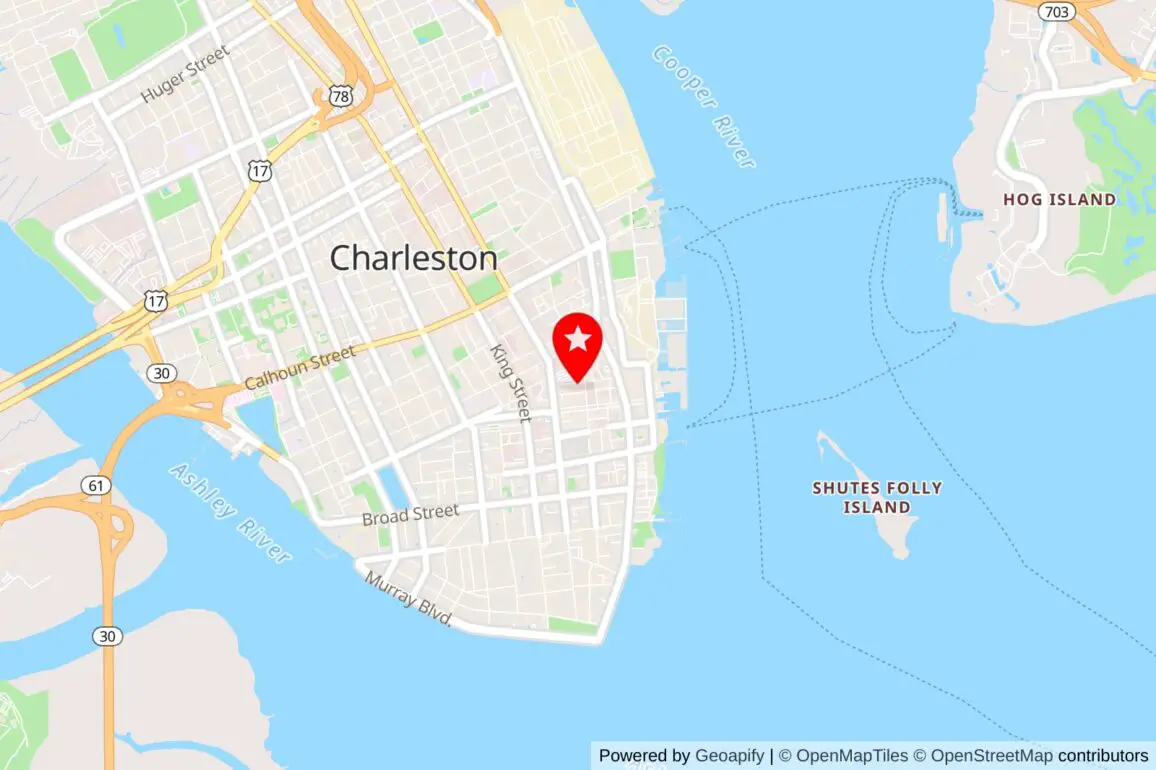
Walks of Charleston offers guided walking tours focused on the city’s cultural history. Their tours visit key sites like Rainbow Row, the French Quarter, and the Battery. They provide a detailed look at Charleston’s past beyond what typical history books cover.
Their guides are licensed by the City of Charleston and have passed a strict exam. They know the city well and share stories that bring the history of Charleston to life. Each guide is passionate and experienced, making the tours both educational and engaging.
The tours highlight Charleston’s unique architecture, vibrant culture, and historical events dating back to the city’s founding in 1670. Guests often praise the guides for their knowledge and friendliness. The tours include chances to ask questions and learn about some lesser-known aspects of the city.
The company has built a reputation for delivering informative, enjoyable experiences in Charleston’s oldest city.
Location: 45 Pinckney St, Charleston, SC 29401
8) Joint Base Charleston
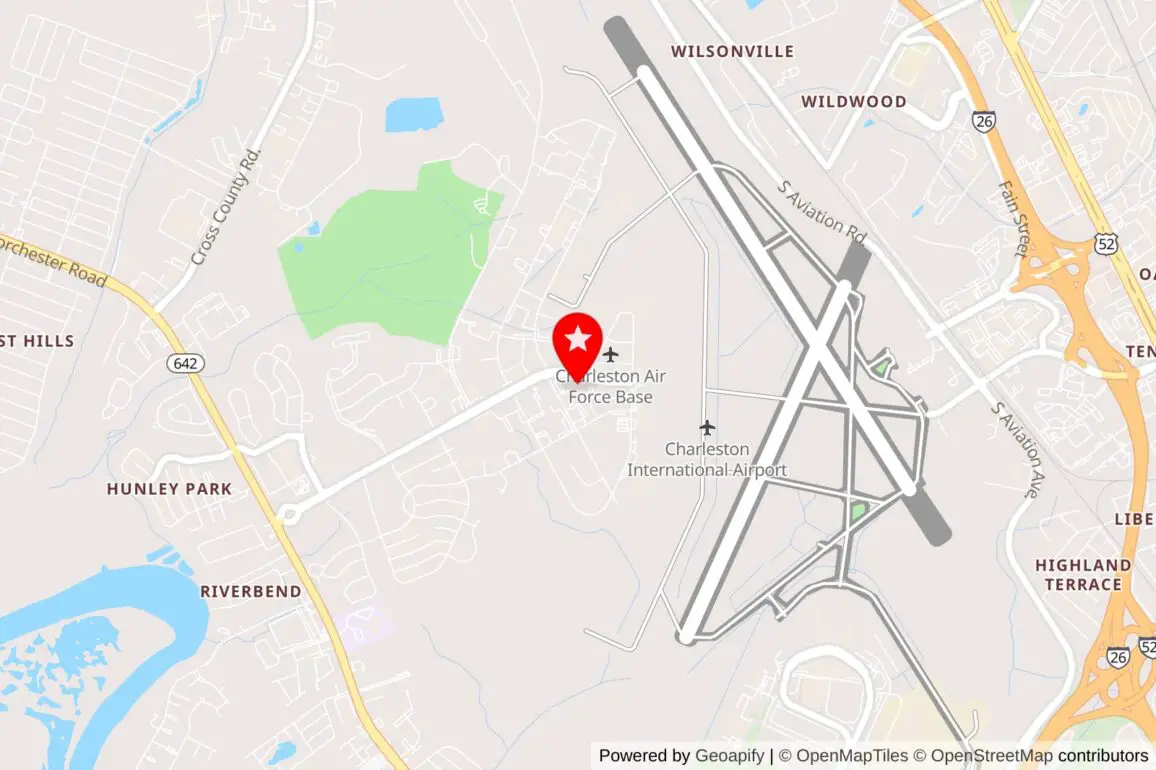
Joint Base Charleston is a key military installation in South Carolina. It supports both Air Force and Navy missions, serving as an important hub for defense and logistics.
The base hosts various units, including emergency services and medical groups. It provides strong support to military families, offering services like child passenger safety checks.
Leadership at Joint Base Charleston often works with state officials to maintain strong ties with local communities. The base also highlights the dedication of its service members through various recognition events.
For over 20 years, the base has been home to training programs that develop skilled maritime enforcement specialists. This continues to strengthen its role in protecting the coast.
Location: 102 E Hill Blvd, Joint Base Charleston, SC
9) Maybank Public House
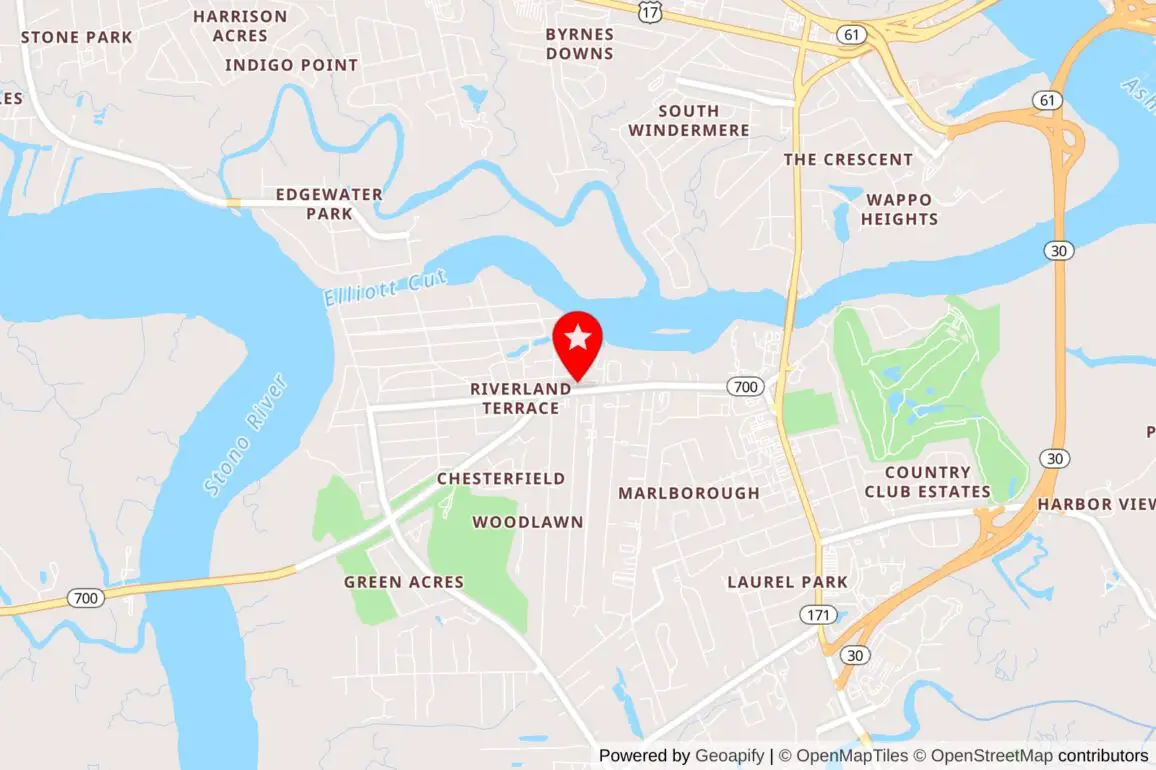
Maybank Public House is a well-known spot in Charleston that blends a rustic style with a modern gastropub feel. It offers a variety of American dishes for brunch, lunch, and dinner. The interior features reclaimed wood and local art, giving it a cozy but stylish atmosphere.
The menu includes a range of options, from burgers to craft beers on tap. It is popular among both locals and visitors looking for a casual place to eat and socialize. The restaurant also serves cocktails and has a bar area.
It stays open late on weekends, making it a good choice for evening plans. Reservations are suggested for larger groups, but smaller parties can call ahead to reduce wait times. Gift cards are available and can be used at this location or Coleman Public House.
Location: 1970 Maybank Hwy, Charleston, SC 29412
10) High Cotton Charleston Restaurant
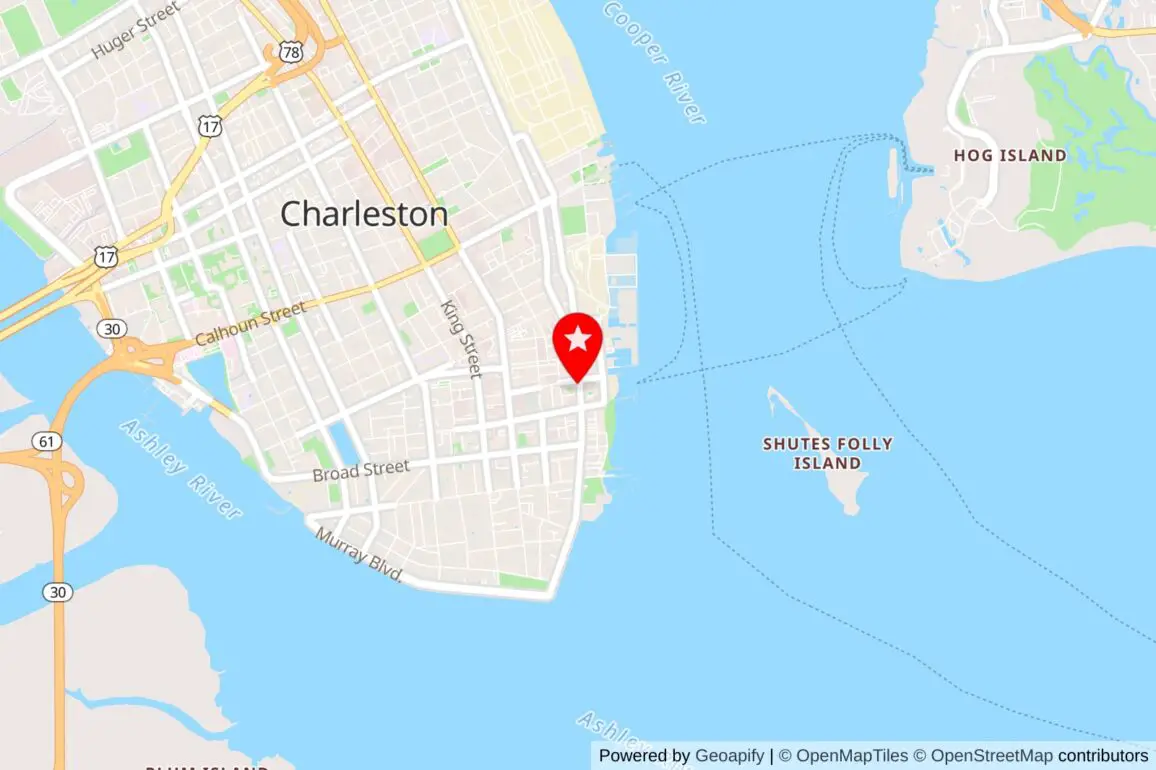
High Cotton Charleston Restaurant is known for its spacious and refined atmosphere. It features heart pine floors and antique brick, which add to its classic Southern charm. The restaurant offers true Charleston hospitality, making guests feel welcome from the moment they arrive.
The menu focuses on Lowcountry fare, using fresh seafood and local ingredients from nearby farms. This dedication to quality creates dishes that reflect the flavors of the region. The bar area is casual but stylish, providing a place for conversation and relaxation.
Reservations are recommended but not required. The restaurant also welcomes private events and groups, aiming to make every occasion memorable. Service is noted to be attentive and professional.
Location: 199 E Bay St, Charleston, SC 29401
The Significance of Charleston in Dear John
Charleston offers rich scenery and historic buildings that shape much of the film’s mood. Its waterfront views and timeless architecture create a strong sense of place that feels authentic. This helps the story connect with real-life settings in South Carolina.
How Charleston’s Scenery Shapes the Film
Charleston’s natural landscape plays a key role in the movie. The film uses the city’s coastal views, parks, and open spaces to reflect the emotions of the characters. The waterfront scenes, including docks and marshlands, emphasize themes of distance and longing between the leads.
The changing seasons in Charleston also add depth. Outdoor settings during different weather conditions highlight moments of warmth or tension. This use of real locations helps ground the story in a believable Southern environment.
Unique Architectural Backdrops
The film features many historic buildings that add character to the story. Notable locations include The College of Charleston and nearby plantations. These sites provide authentic Southern architecture, like old brick walls, wrought iron balconies, and grand columns.
Charleston’s architecture reflects the culture and history of the region. Using real places instead of sets adds visual richness. It also connects viewers to the story by showing genuine locations readers or travelers might recognize or visit.
Filming in South Carolina: Behind the Scenes
The production of Dear John in South Carolina involved working closely with local communities and managing various logistical challenges. Support from state agencies played a key role in meeting these demands and ensuring smooth filming.
Production Challenges and Local Support
Shooting on location in places like the Isle of Palms and Charleston presented weather-related obstacles. Rain and changing tides sometimes delayed outdoor scenes, especially those filmed near the fishing pier.
The local residents were cooperative, allowing crews access to private spaces and helping maintain confidentiality. Their cooperation helped reduce disruptions and kept the production on schedule.
The crew worked to balance the needs of the film with preserving the natural beauty of the area. Care was taken to avoid damage to local sites, such as beaches and parks.
Collaboration with the South Carolina Film Commission
The South Carolina Film Commission provided vital support by assisting with permits and location scouting. This helped the production secure diverse settings within Charleston and nearby islands quickly.
The commission also facilitated communication between the filmmakers and local authorities. This ensured that road closures and other logistical needs were handled efficiently.
Incentives offered by the state helped reduce production costs. This economic support encouraged filmmakers to choose South Carolina over other possible locations.
Frequently Asked Questions
The filming of Dear John used several well-known locations in Charleston and across South Carolina. These places include beaches, historic plantations, and college campuses that helped create the setting for the story. Many of the sites remain accessible to visitors today.
Which beach was used for filming in ‘Dear John’?
The movie filmed beach scenes on Edisto Island and Sullivan’s Island. These locations offered the coastal look needed for the story’s outdoor scenes.
Is Cassina Point Plantation a real location featured in ‘Dear John’?
No, Cassina Point Plantation is not listed among the filming sites for Dear John. Instead, Boone Hall Plantation & Gardens was used for some plantation scenes.
Can you visit the ‘Dear John’ filming locations open to the public?
Yes, many locations like Boone Hall Plantation, College of Charleston, and Edisto Island are open to visitors. They offer tours and allow fans to see where the movie was filmed.
What are some notable locations in Charleston where ‘Dear John’ was shot?
Notable Charleston spots include the College of Charleston, especially the Cistern and Randolph Hall. The American Theater was also used for certain scenes in the film.
How did the filming locations in South Carolina contribute to ‘Dear John’s’ setting?
The historic and coastal sites created an authentic Southern feel. Plantations and college buildings helped show the culture and time period important to the movie’s story.
Are there any tours available highlighting the ‘Dear John’ movie locations?
Yes, there are guided tours in Charleston that cover Dear John and other film locations. These tours often include stops at the College of Charleston and nearby plantations.


